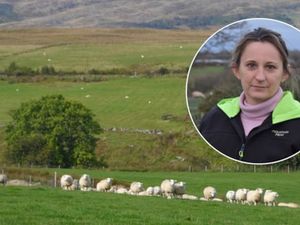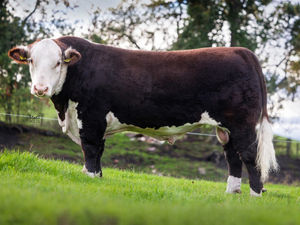Small hands are needed at lambing time on farm
It's 6.45am. I must have dozed off after the alarm went off, writes Joy Bennett.
No husband in the armchair by the Rayburn so he has either been up since 4am or he failed to get up too.
Quick cuppa, then back into the lambing shed to be met by a very fed-up husband trying to lamb a large Texel ewe. He is a much more patient "lamber" than I am.
I get fed up but he takes things slowly and quietly and rarely fails to successfully deliver a live lamb.
The ideal presentation for delivery is nose and two front feet coming out together, but this Texel had just the head coming forward and the two legs back.
It is impossible to bring the lamb out like that and its head soon begins to swell so the head has to be pushed back in to the womb and the legs brought forward.
Every time my husband brought the legs up the head was slipping back.
He had managed to bring one leg out but needed someone with a small hand to fetch the other leg out.
He always said that the first thing he noticed about me when we met was that I had small hands and from that moment thought I would be ideal marriage material . . . hmm!
The pain is excruciating when the ewe starts to push and your hand is trapped between the lamb's leg and her pelvis, especially when your hand is still bruised from the day before.
All I could do was swear a lot, cry a bit and grit my teeth as I pulled the second leg out then it was plain sailing to deliver a large healthy live lamb, but my bruised hand will take a few days to recover!
My next job is to check on the lambs born during the night, ensure they have sucked and that their mother has bonded with them.
I was pleased to see the Jacob triplets are looking well so then went round the pens putting rubber rings on the lambs' tails with an elastrator.
This cuts off the blood supply to the end of the tail so that in about three weeks it withers and drops off. It sounds cruel and some of the lambs certainly find it painful for 10 to 15 minutes but very soon get over it. When the tails are left long they soon get coated with faeces when the lambs go out to grass and when the weather warms out it becomes an ideal place for flies to lay their eggs. The eggs then hatch and the maggots begin to feed on the flesh of the lamb. It is one of the most distressing things to see in farming. The maggots spread rapidly and can eat large areas of flesh if not spotted early – hence the docking of lambs tails.
I also put numbers on the ewes and lambs at this time – blue on singles, red on twins – so if we need to identify them in the field to move them or if a lamb is ill it is easier to match them up and not separate mum and baby.
And all this before breakfast.
* Joy Bennett and her husband run a small farm on the Welsh border





